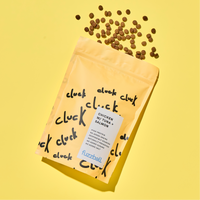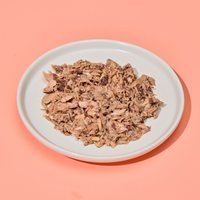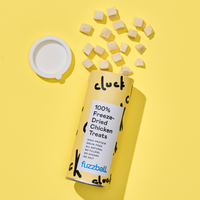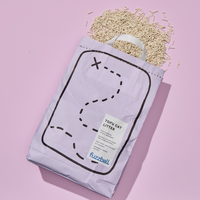Signs Your Cat’s Food Has Gone Bad (Even If It Looks Fine)

That bowl of food might look fine to you, but your cat could be turning up their nose for a reason. Just because kibble isn’t growing mold or your wet food hasn’t exploded doesn’t mean it’s still fresh. Like human food, cat food has its limits, and when it goes off, usually your cat is the first to notice. As more cat parents step up their nutrition game, keeping food fresh has become just as important as picking the right ingredients.
Knowing when your cat’s food has gone bad isn’t just about saving money or avoiding waste. It’s about protecting your cat’s health. Spoiled or degraded food can lead to stomach issues, loss of appetite, and long-term nutritional deficiencies. Being able to spot the signs of bad food early means you can act quickly, keeping your cat happy, healthy, and well-fed.

Signs Your Cat’s Food Has Gone Bad (Even If It Looks Fine)
Recognising the warning signs doesn’t take expert training, just a bit of awareness, attention to detail, and a basic understanding of what to look for. Here are the most common signs that your cat’s food may have gone bad, along with straightforward tips to store it properly and preserve its nutritional value.
That "Best By" Date? It’s More Important Than You Think
Many people think the "best by" date on cat food is just about whether it's still safe to eat. But that date is also about how long the food will keep its full nutritional value. After this date, important nutrients like vitamins and fats can start to break down, even if the food looks and smells fine.
If your cat eats food that's past this point, they might not be getting the nutrition they need. This could affect their health, energy, and overall well-being over time. So, even if expired food doesn't look spoiled, it's still better to replace it with a fresh batch.
Always Do A Smell Check
Cats are guided by scent, and their noses are far more sensitive than ours. If you open a bag of cat food or cat treats and notice a rancid, sour, or chemical odour, trust your instincts; it’s likely spoiled. Exposure to air, humidity, or heat can oxidise the fats and oils in the food, giving off an off-putting smell. If your cat is suddenly hesitant, sniffing their bowl and walking away, a quick smell test on your end can often explain why.
Sniff Test Tips:
|
Smell Indicator |
What It Means |
|
Neutral, fresh scent |
Cat food is likely still safe and properly stored |
|
Sour or acidic smell |
Possible bacterial growth or fat oxidation |
|
Chemical or rancid odour |
Oils have gone bad; nutrients may be degraded |
|
Metallic scent |
Wet food may be spoiled or react with the packaging |
|
No scent, but the cat refuses food |
Food may be stale or subtly off despite no obvious bad smell |
Texture Tells All
Your cat might not care about presentation, but texture still matters. Dry cat food that feels unusually soft, sticky, or powdery might have absorbed moisture, which can lead to mould or bacterial contamination. The same goes for crunchy treats that suddenly feel mushy or oddly dense.
And wet food? If you notice separation (like liquid floating above the meat) or odd clumping, that’s a sign of spoilage or broken-down ingredients.
Mould, Bugs, and Other Uninvited Guests
Visual cues are often the most alarming and the most reliable. If you spot any signs of mould (like grey, white, or green), or find insects crawling around the food or packaging, discard it immediately. Pantry pests such as beetles or moths are known to infiltrate opened bags of food stored too long or improperly sealed. Even if only part of the bag is affected, contamination often spreads invisibly throughout the contents. If in doubt, throw it out.
Your Cat Knows Before You Do
One of the best indicators of bad food? Your cat. Cats have strong instincts and sensitive stomachs. If they start turning away from meals they once devoured, or if they nibble and leave most behind, they could be telling you something is wrong.
Behavioural Red Flags:
- Sniffing but not eating
- Eating a bite or two, then walking away
- Sudden vomiting or diarrhoea
- Increased begging for other food
Any sudden change in appetite deserves a closer look at what you’re serving.

How to Keep Cat Food Fresh
Keeping your cat’s food fresh doesn’t have to be complicated, but it does require a bit of care. Poor storage can lead to spoilage, nutrient loss, and even contamination. By using proper containers, handling food correctly, and paying attention to storage conditions, you can keep your cat’s meals fresh, safe, and full of nutritional value.
Store Smartly
Keep cat food in a cool, dry place away from sunlight. Once opened, reseal the bag tightly and place it inside an airtight container. Use BPA-free plastic, stainless steel, or glass containers to avoid chemical leaching. Never leave food in warm or humid areas, as heat accelerates nutrient breakdown and mold growth.
Don’t Mix Old With New
It might seem convenient to pour a fresh bag of kibble over the last bits of an older batch, but this habit can lead to contamination. Oils from older food can go rancid and spoil the new food, especially if the container hasn't been cleaned. Leftover crumbs or residue can also carry bacteria or mold spores, making the entire new batch unsafe.
To prevent this, always empty and clean the storage container before refilling it. This simple step helps avoid cross-contamination and ensures your cat is getting the freshest, safest food every time.
Check for Damage Before Storing
Always inspect bags and cans before purchase and storage. Damaged packaging, such as rips, dents, or punctures, can expose food to air and bacteria. Even a small tear in a dry food bag or dent in a can may compromise the safety of the food inside. If packaging looks compromised, it's safer not to serve it.
Use It Within a Safe Window
Open bags of dry food should ideally be consumed within four to six weeks. Wet food, once opened, is recommended to be used within 24-48 hours and stored in the fridge in a sealed container.
Fresh Food, Happy Cat
Spotting spoiled cat food isn’t always as obvious as seeing mould or smelling something foul, but your cat usually knows when something’s not right. Watching for subtle changes in smell, texture, and behaviour can help you catch problems early.
By understanding how to read expiration dates, storing food properly, and keeping an eye on your cat’s reactions, you’re not just filling their bowl; you are also protecting their health.





